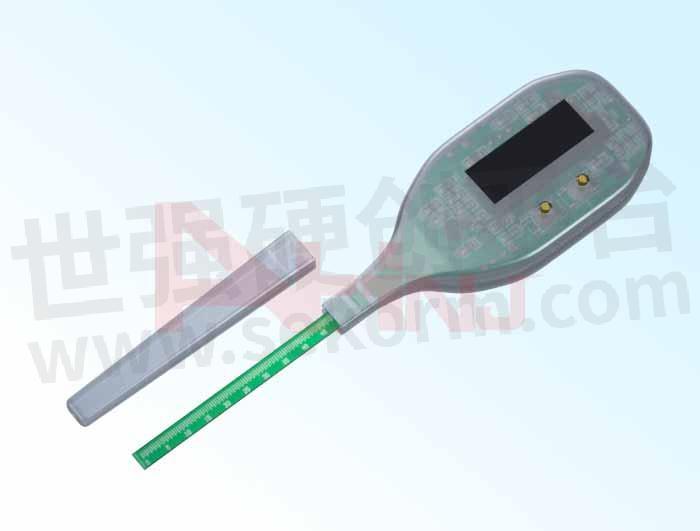What is Gauss Rating and How to Use a Gauss Meter

First, to understand what a gaussmeter is, we need to know what gauss rating means. Gauss is the unit that measures magnetic field B, or magnetic flux density. It was named for the German mathematician and physicist that built the early instrument to measure magnetic fields, Carl Friedrich Gauss. His version was essentially a bar magnet suspended by some string.
Gaussmeters today are a little more sophisticated. Magnets are generally given a Gauss rating and can give some clue as to the pulling power. However, it is important to remember that Gauss rating on its own does not fully indicate the strength of a magnet. Although a magnet may have a high Gauss rating, or magnetic flux it may not be as strong as another magnet with a low rating for one particular reason, size. In other words, the actual size of high powered magnets and magnetic flux matter when it comes to magnet strength. If you do want to figure out the gauss rating of a particular magnet.

Supplies: Magnets and Gaussmeter
Steps:
Turn your gaussmeter on and pick up the end of the wire attachment. This is sometimes called the probe, which has a sensor inside it that helps to measure.
Put the magnet on the end of the probe and slide it across the sensor.
Hold for a few seconds and note the highest rating that the meter picks up.
This is a general way to find the gauss. The average person may not really need to measure gauss because most magnets have the rating. However, educators, researchers, electricians, product designers and others may find them useful when studying magnetism or developing projects.
We are a gaussmeter and close the switch supplier in China.
- +1 Like
- Add to Favorites
Recommend
- HT35 And HT55 Series Of High Torque Brushless Motors, With Over 10,000 Gauss Flux Density
- Excellent Low Power Hall Switch Sensor SLKOR SL1603SL with 33 Gauss and a Low Switching Frequency of 5Hz
- Hall Sensor SL1605TL Supports a Working Voltage Range of 5.5V and the Switching Frequency of 20Hz
- SLKOR SL1613SL: High-performance Hall Sensor in SOT-23 Packaging with Three Pins and Operating at a Voltage of 5.5V
- MDT Released Bi-stable TMR Magnetic Switch Sensors MR1212/TMR1213/TMR1215 with Passive Magnetic Memory Effect
- Can Hall Effect Sensor Be Used for Magnetic Field Measurement?
- Definition and Significance of Decibel, Signal-to-Noise Ratio, and Standing Wave Ratio (Part 1)
- Wide Application of Zero Power Consumption Magnetic Sensor
This document is provided by Sekorm Platform for VIP exclusive service. The copyright is owned by Sekorm. Without authorization, any medias, websites or individual are not allowed to reprint. When authorizing the reprint, the link of www.sekorm.com must be indicated.





























































































































































































































































































































































































































































































































































































































































































































































































































































































